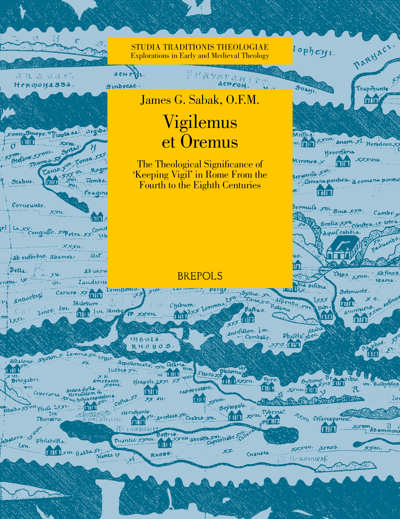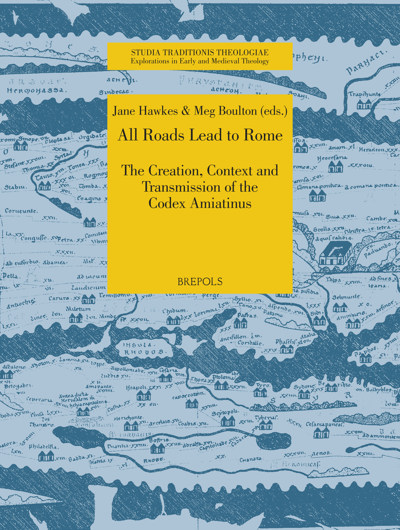
The Origins of Christianity in the Calendar Wars of the Second Century BCE
Alfred Osborne
- Pages: 325 p.
- Size:156 x 234 mm
- Illustrations:2 tables b/w.
- Language(s):English
- Publication Year:2025
- € 75,00 EXCL. VAT RETAIL PRICE
- ISBN: 978-2-503-61306-2
- Paperback
- Available
- € 75,00 EXCL. VAT RETAIL PRICE
- ISBN: 978-2-503-61307-9
- E-book
- Available
This clearly-argued work uses the 364-day liturgical calendar and its followers the Notsrim to link together Jesus and the earliest Christians, the Jewish civil war prompted by calendrical change in the mid second century BCE, the Maccabees and Hasmonaean kings, the revolt against Rome in 66-70 CE, and the curse on the nôṣrîm in the Birkat ha-minim of the synagogue prayer, the Amidah.
Dr Alfred Osborne, who retired as a bishop of the Orthodox Church, trained as a Classicist with an interest in Semitic languages. He served as the first chairman of the Institute for Orthodox Christian Studies in Cambridge and on the International Commission for Anglican-Orthodox Theological Dialogue. An earlier work, A Cosmic Liturgy: Qumran’s 364-Day Calendar, was published by Brepols in 2019.
In the Gospels Jesus is called a ‘Nazarene’ or ‘Nazoraean’. Does this mean he came from Nazareth? Basing himself on Lidzbarski’s analysis of the Hebrew/Aramaic origins of the Greek terms Nazarênos and Nazôraios Dr Osborne proposes that these epithets indicate that Jesus was a nôṣrî, a ‘(Strict) Keeper/Guardian (of the Law)’. This meant he was a follower of the 364-day liturgical calendar known to us from 1 Enoch, Jubilees, and Qumran. An examination of the passages where these terms appear shows that this hypothesis leads to a deeper understanding of the circumstances in which the first Christian communities arose and clarifies greatly the background of Jesus’ crucifixion as Yēšû ha-Nôṣrî.
The book then traces the influence of the nôṣrîm on the history of Israel from their origin in the ‘calendar wars’ that tore apart the Jewish nation from 172-163 BCE. These broke out after the lunisolar calendar was introduced into the temple liturgy by Menelaus the high priest, and only came to an end when the 364-day calendar was reintroduced under his successor, Alcimus. In 151 BCE, however, Jonathan Maccabaeus was appointed high priest and reintroduced the lunisolar calendar. The nôṣrîm were suppressed and forced to emigrate or go underground. They reappear as leaders of Jewish resistance to Roman occupation after Pompey incorporated Judaea into the empire in 63 BCE. Eventually they became the chief instigators of the revolt against Rome that led to the destruction of Jerusalem in 70 CE. Osborne argues that the nôṣrîm thought to have been included in the Twelfth Benediction of the Amidah at Yavneh around 90 CE are these same ‘(Strict) Keepers/Guardians (of the Law)’.
General Introduction and Summary
Part One
Chapter 1. Introduction: Jesus the Nazarene and Nazoraean
Chapter 2. The Meaning of Nazoraean and Nazarene in the New Testament
Chapter 3. Jesus as a ‘Notsri’ in the Gospels
Chapter 4. The Nazoraeans in Acts
Chapter 5. Conclusion: The Nazarenes and Nazoraeans are Notsrim, ‘Keepers (of the Law)’
Part Two
Chapter 6. Introduction: The Two Calendars and their Characteristics
Chapter 7. Onias III (185? – 175 BCE)
Chapter 8. Jason (175-172 BCE)
Chapter 9. Menelaus (172-163 BCE)
Chapter 10. Alcimus (163-159 BCE)
Chapter 11. The Unnamed High Priest (159-151 BCE)
Chapter 12. Jonathan Maccabeus (152-142 BCE)
Chapter 13. The Story that Could Not Be Told
Part Three
Chapter 14. Introduction
Chapter 15. The Hasidim as Notsrim
Chapter 16. The ‘Fourth Philosophy’ and the Sicarii
Chapter 17. The Fourth Philosophy and the Notsrim
Chapter 18. Summary and Conclusions
Part Four
Chapter 19. Introduction
Chapter 20. The Notsrim Live on in the Liturgy of the Synagogue
Chapter 21. The Birkat ha-mînîm in Christian Sources
Abbreviations for Editions of Biblical and Non-Biblical Texts, Works of Reference, and Journals
Bibliography




